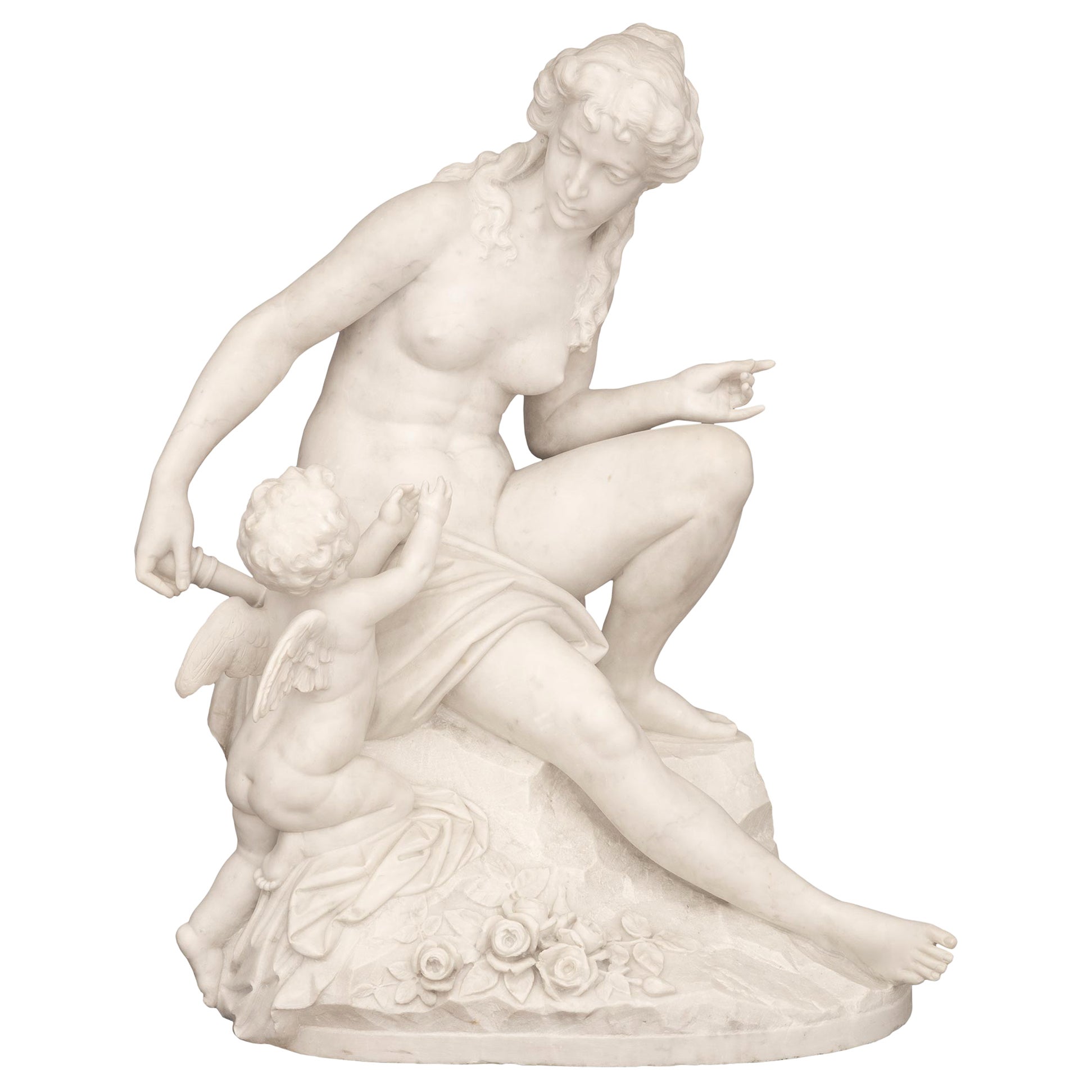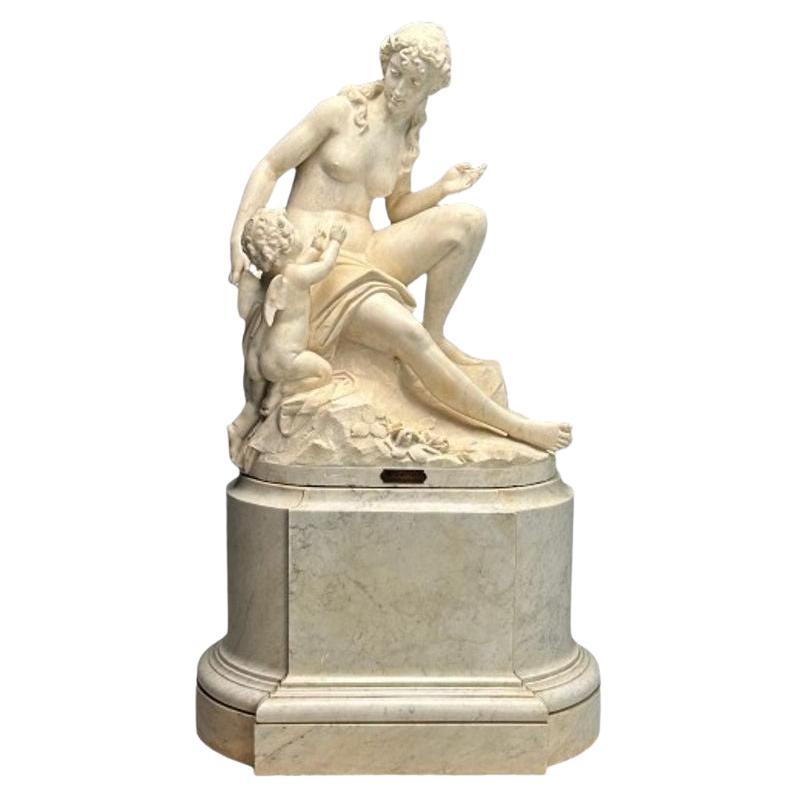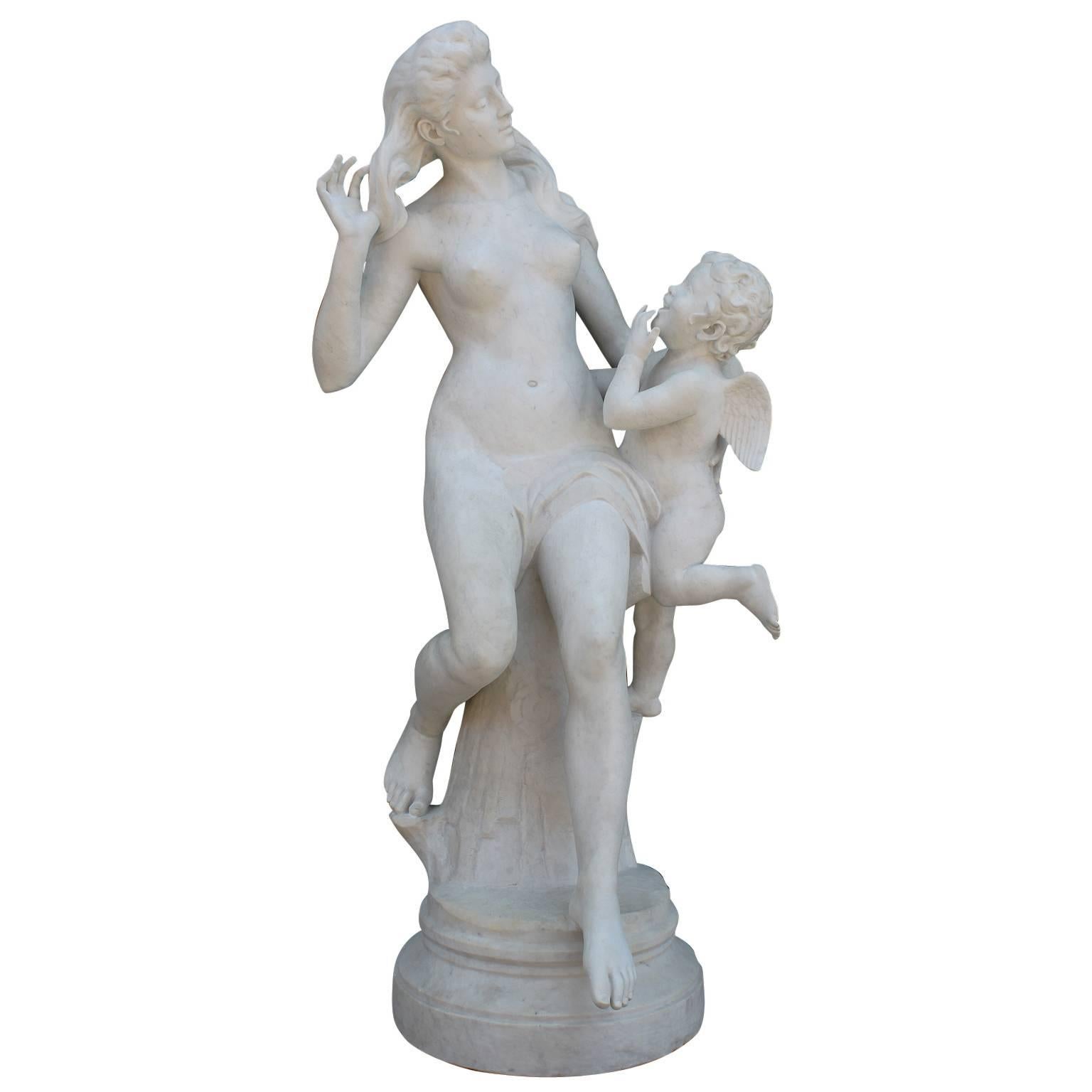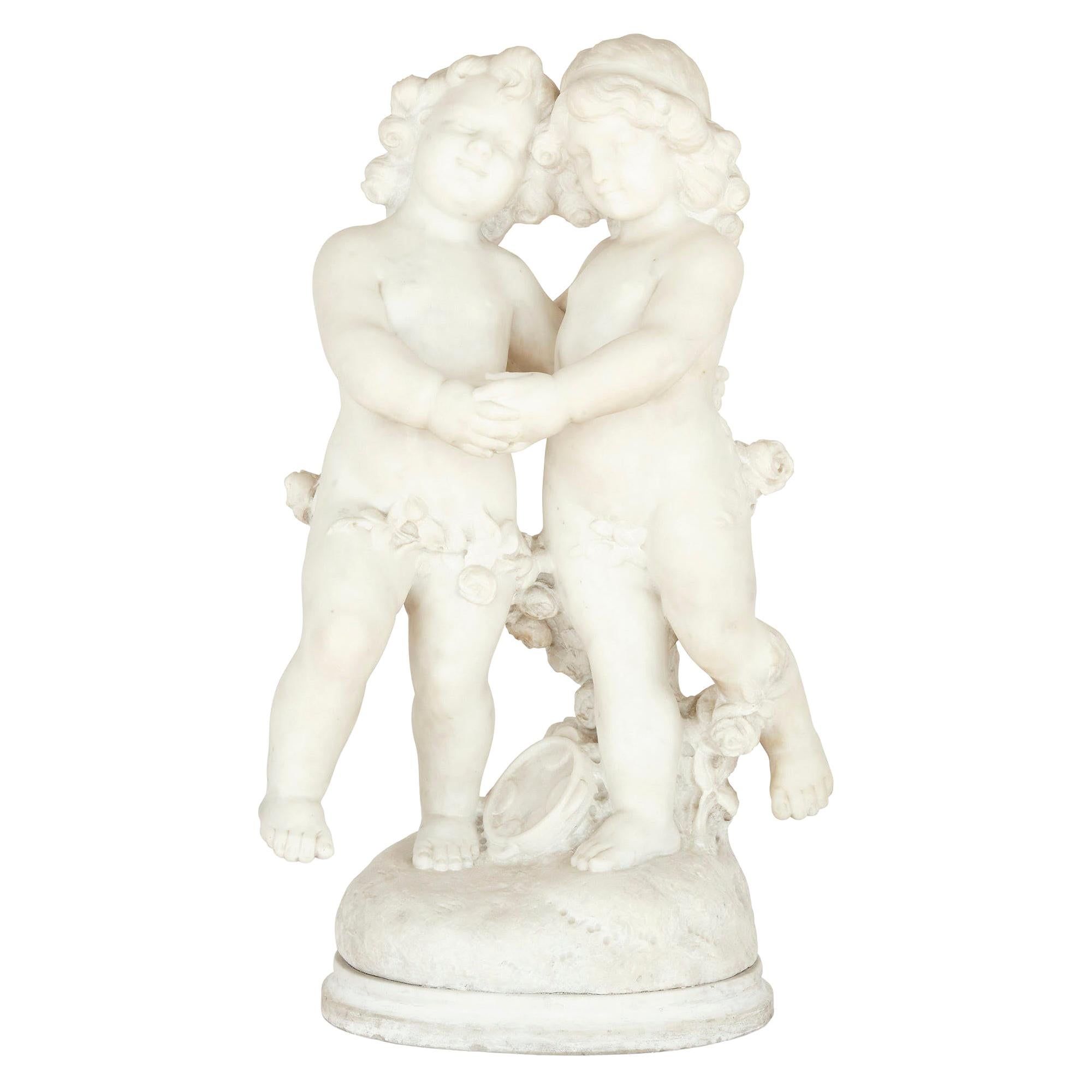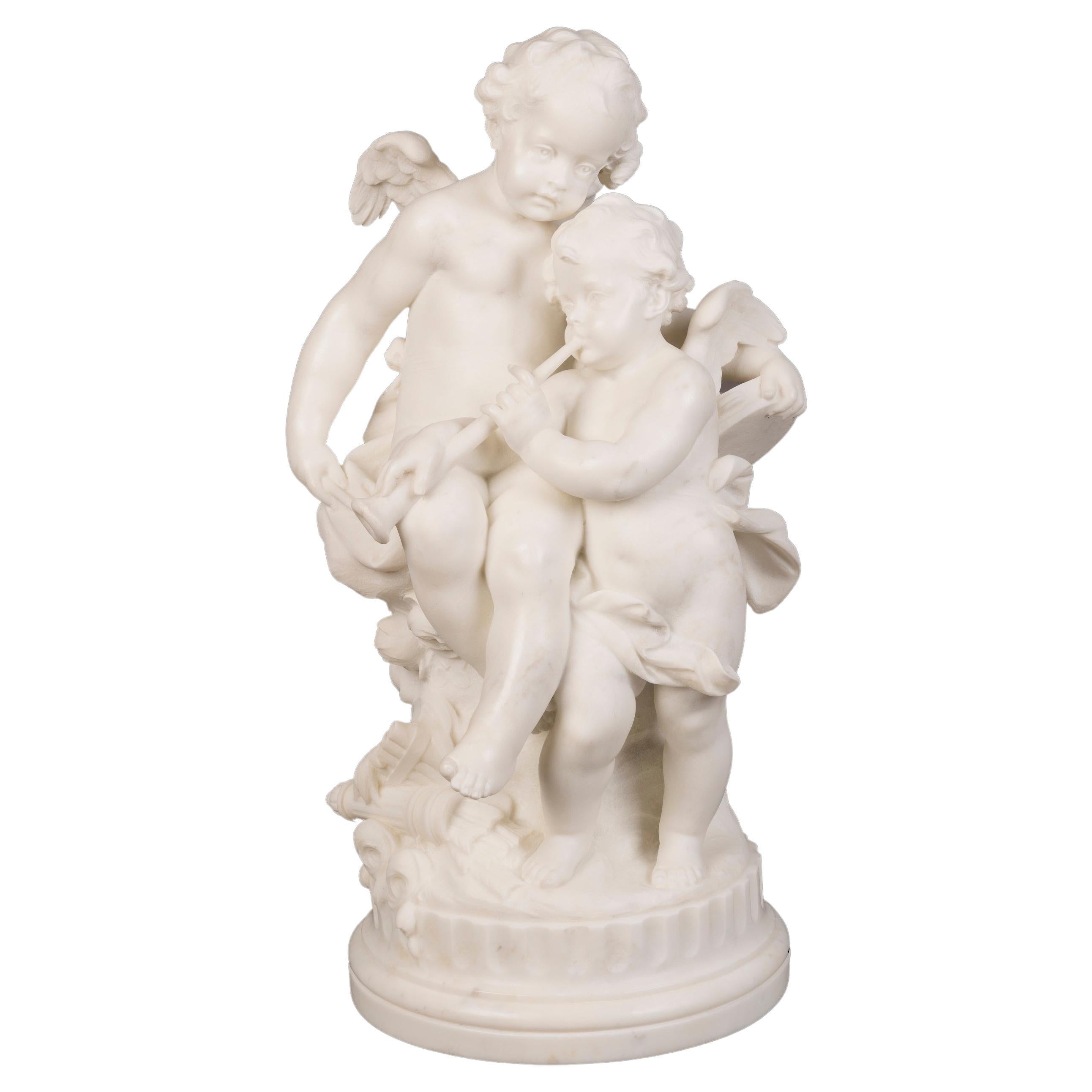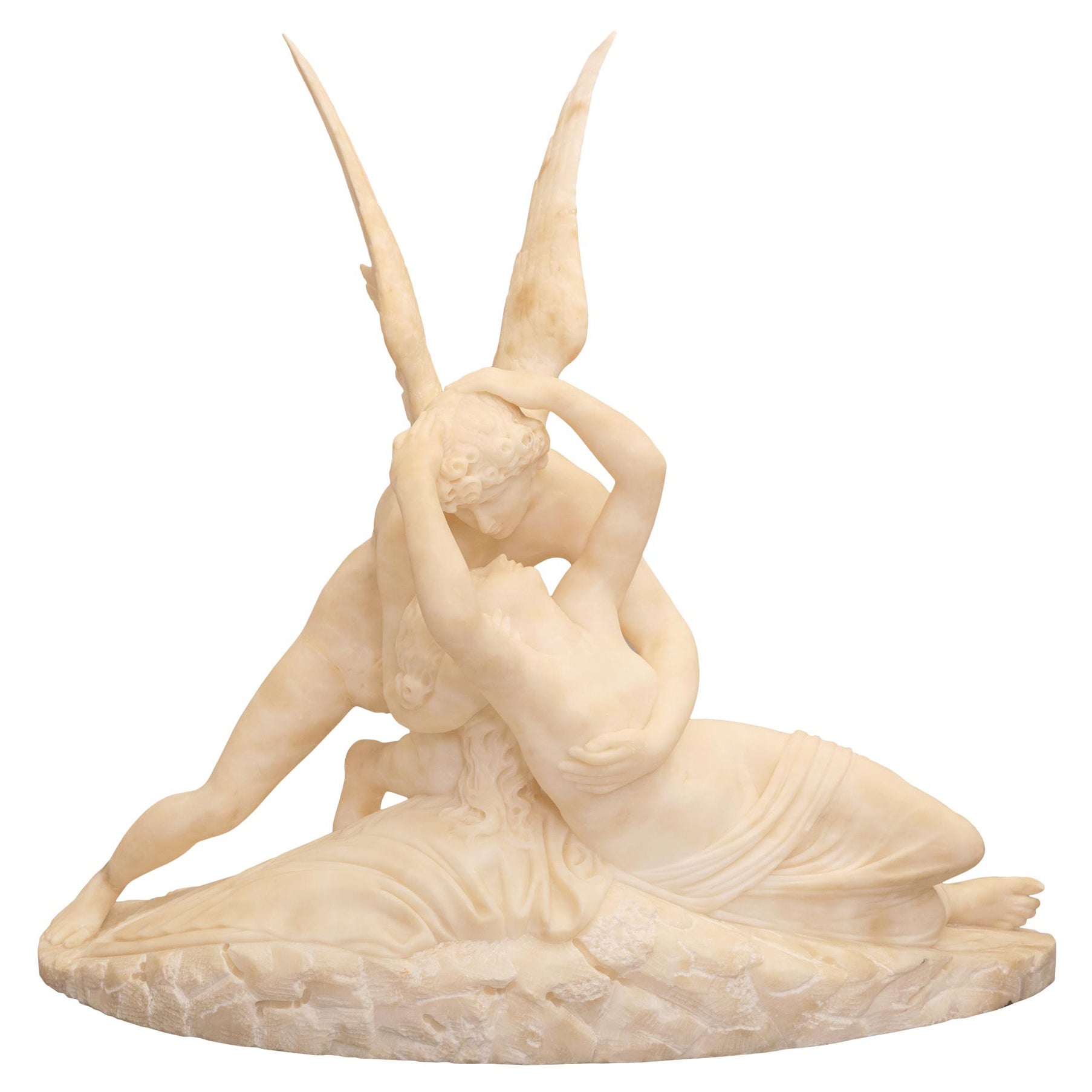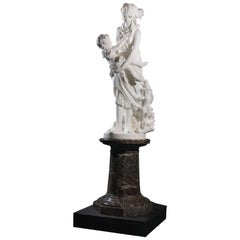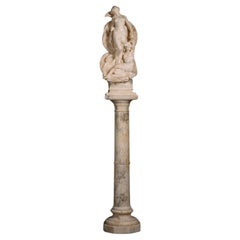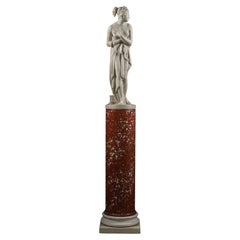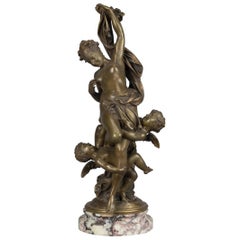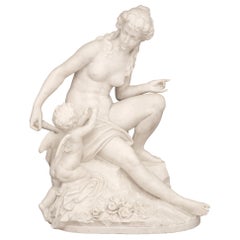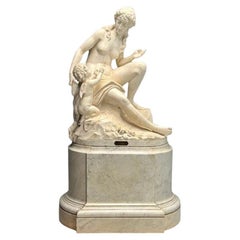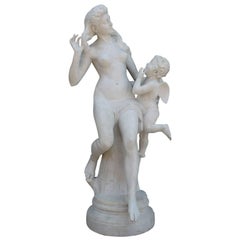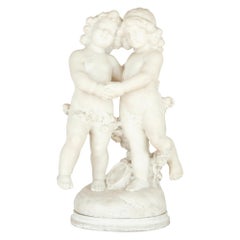Items Similar to A White Marble Figural Group of Venus and Cupid by Henri Weigele
Want more images or videos?
Request additional images or videos from the seller
1 of 5
A White Marble Figural Group of Venus and Cupid by Henri Weigele
$21,806.75
£16,000
€18,760.94
CA$30,084.31
A$33,455.01
CHF 17,571.29
MX$409,021.01
NOK 218,955.16
SEK 206,415.58
DKK 140,017.24
About the Item
A White Marble Figural Group of Venus and Cupid by Henri Weigele.
Signed ‘H. Weigele’ and titled ‘IL PASSEPA'
Born in Schierbach, Haut-Rhin, Henri Weigele (1858- 1927) studied sculpture in Paris under Jules Franceschi, (himself a pupil of François Rude), and exhibited frequently at the Salon in the last quarter of the nineteenth century. He won the Honorable mention at the Salon des Artistes Français in 1893, followed by a third class medal in 1907 and a first class medal in 1909.
French, Circa 1900.
- Dimensions:Height: 13 in (33 cm)Width: 26.38 in (67 cm)Depth: 11.82 in (30 cm)
- Materials and Techniques:
- Place of Origin:
- Period:
- Date of Manufacture:Circa 1900
- Condition:Wear consistent with age and use.
- Seller Location:Brighton, GB
- Reference Number:Seller: B681001stDibs: LU1028043176822
About the Seller
5.0
Recognized Seller
These prestigious sellers are industry leaders and represent the highest echelon for item quality and design.
Established in 1964
1stDibs seller since 2014
58 sales on 1stDibs
Typical response time: 6 hours
Associations
The British Antique Dealers' AssociationLAPADA - The Association of Arts & Antiques Dealers
- ShippingRetrieving quote...Shipping from: Brighton, United Kingdom
- Return Policy
Authenticity Guarantee
In the unlikely event there’s an issue with an item’s authenticity, contact us within 1 year for a full refund. DetailsMoney-Back Guarantee
If your item is not as described, is damaged in transit, or does not arrive, contact us within 7 days for a full refund. Details24-Hour Cancellation
You have a 24-hour grace period in which to reconsider your purchase, with no questions asked.Vetted Professional Sellers
Our world-class sellers must adhere to strict standards for service and quality, maintaining the integrity of our listings.Price-Match Guarantee
If you find that a seller listed the same item for a lower price elsewhere, we’ll match it.Trusted Global Delivery
Our best-in-class carrier network provides specialized shipping options worldwide, including custom delivery.More From This Seller
View All‘Mosè Salvato Dalle Acque’. An Important Marble Group By Pietro Bazzanti
By Pietro Bazzanti
Located in Brighton, West Sussex
Pietro Bazzanti (Italian, 1825-1895) - ‘Mosè Salvato Dalle Acque’.
An Important Exhibition Florentine Marble Group of Moses Rescued from the Waters, on a carved Rosso Levanto Pedest...
Category
Antique Late 19th Century Italian Figurative Sculptures
Materials
Marble
A Fine Carved Alabaster Group of The Birth of Venus, On Pedestal
Located in Brighton, West Sussex
A Fine Carved Alabaster Group of The Birth of Venus, On Pedestal.
Modelled with Venus standing in an open oyster shell holding the hand of a nymph seated at her feet. On a veined alabaster pedestal.
Italy, Circa 1900.
The Birth of Venus depicts the moment described by the Roman poet Ovid when, having emerged from the sea in a shell, Venus lands at Paphos in Cyprus. Venus, or Aphrodite in Greek mythology, wears a pearl neckless...
Category
Antique 19th Century Figurative Sculptures
Materials
Alabaster
A Carrara Marble Statue Of The 'Venus Italica', On Pedestal, After Canova
Located in Brighton, West Sussex
A Fine Carrara Marble Statue Of The 'Venus Italica', On Pedestal, After the Celebrated Model by Antonio Canova.
Venus is modelled looking over her right shoulder holding her robes ...
Category
Antique 19th Century Italian Figurative Sculptures
Materials
Marble, Bronze
'L'innocence Tourmentée Par L'amour' A Figural Group by Luca Madrassi circa 1900
By Luca Madrassi
Located in Brighton, West Sussex
'L'innocence Tourmentée Par L'amour' - A fine patinated bronze figural group by Luca Madrassi.
French, circa 1900.
Inscribed 'L.MADRASSI.PARIS'.
With Gervais foundry cachet...
Category
Antique Late 19th Century French Belle Époque Figurative Sculptures
Materials
Bronze
'Cupid & Psyche' an Important Bronze Figure by François-Raoul Larche
By François-Raoul Larche
Located in Brighton, West Sussex
'Cupid & Psyche' - An important parcel-gilt and patinated bronze figure, by François-Raoul Larche.
Signed to the base 'Raoul Larche 1891'.
This finely cast parcel-gilt bronze figure depicts Cupid and Psyche with Zephyr.
François-Raoul Larche (1860-1912), the son of an ornamental sculptor, was a well-known Art Nouveau sculptor...
Category
Antique 19th Century French Figurative Sculptures
Materials
Bronze
'Bacchantes', a Fine Patinated Bronze Figural Group After Clodion, circa 1870
By Claude Michel Clodion
Located in Brighton, West Sussex
'Bacchantes', a fine patinated bronze figural group after Claude Michael Clodion, French (1738-1814).
French, circa 1870.
Signed 'Clodion' to the base and inscribed 'BACCHANTE...
Category
Antique Late 19th Century French Figurative Sculptures
Materials
Bronze
You May Also Like
Italian 19th Century White Carrara Marble Statue of a Venus and Cupid
Located in West Palm Beach, FL
A charming and large scaled Italian 19th century white Carrara marble statue of a Venus and Cupid. The young Venus is seated on a rock with a flowing garment draped over her leg whil...
Category
Antique 19th Century Italian Figurative Sculptures
Materials
Marble
Jean-Marie Boucher, Venus and Cupid Marble Statue, White Marble, Romantic, 1910
Located in Manhasset, NY
Jean-Marie Boucher, Venus and Cupid Marble Statue, White Marble, Romantic, c. 1910
Jean Boucher finely detailed marble sculpture on an impressive marble pedestal base. Plaque on ba...
Category
Antique Late 19th Century European Romantic Statues
Materials
Carrara Marble
Lifesize French 19th-20th Century Carved Marble Sculpture of "Venus and Cupid"
By Félix Charpentier
Located in Los Angeles, CA
A lifesize French 19th-20th century carved marble sculpture of "Venus and Cupid" In the manner of Felix Maurice Charpentier (French, 1858-1924). The tall and slender nude figure of a...
Category
Antique Early 1900s French Greco Roman Figurative Sculptures
Materials
Marble
19th Century White Marble Group of Two Cherubs by A. Duché
By A. Duche
Located in London, GB
19th century white marble group of two cherubs by A. Duché
French, late 19th century
Measures: Height 71cm, width 42cm, depth 26cm
This exquisite white marble group is modelled ...
Category
Antique Late 19th Century French Neoclassical Figurative Sculptures
Materials
Marble, Carrara Marble
19th Century, Italian Carrara Marble Sculpture of Two Putti Cupid & Erato
Located in London, GB
Allegories of the Greek Gods Eros & Erato
An Italian Carved Sculptural Group
Carved from a single block of Carrara marble, the winged putti cavorting together, one playing a trum...
Category
Early 20th Century Italian Figurative Sculptures
Materials
Carrara Marble
French Mid-19th Century Alabaster Statue of Cupid and Psyche
Located in West Palm Beach, FL
A stunning and extremely high quality French mid 19th century Alabaster statue of Cupid and Psyche. The statue after a model by Antonio Canova is raised by a wonderfully executed gro...
Category
Antique 19th Century French Figurative Sculptures
Materials
Marble
More Ways To Browse
Francois Rude
Antique Glass Film
Art Deco Mannequin
Biscuit Figure
Carved Marble Angel
Disney Furniture Office
Metal Knights Vintage
Nymph Statue
Thai Royal
15th Century Angel
Antique Bisque Figure
Antique Soldier Statues
Art Deco Nude Bronze Circa 1920
Art Nouveau Plaster Sculpture
Baby Statue
Etling France
H Moreau Sculpture
High Point Bending Company Chair
